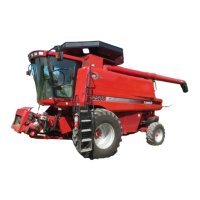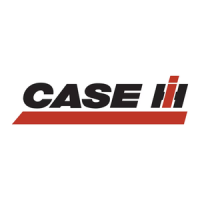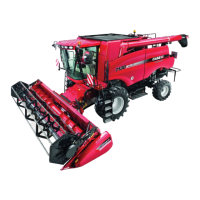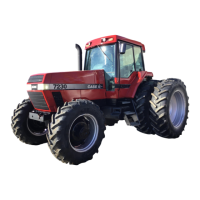GENERAL MAINTENANCE
9
Hydraulic System (cont.) “What’s with the Color of the
Oil in My New Combine?”
The Hy-Tran fluid and the engine oil shipped in new combines
is dyed to allow easier detection of leaks.
Replacement oils are not dyed. Follow recommended change
intervals for the original fluids, and do not replace fluid because
it is the “wrong color”.
Roller Chain
Drive chains work hard on a combine, and proper maintenance
is crucial for reliable operation. Most important, consult the
Operator’s Manual for tension adjustments and specifications
(see figure 9.2).
• Insufficient tension allows chains to whip during operation,
placing shock loads on the chain, sprockets, shafts,
and bearings
• Loose chains do not transmit power at a consistent speed,
and in extreme cases can slip or jump off sprockets
• Excessive tension places added load on the chains,
sprockets, and associated parts
• Chain alignment is critical. Make sure chain is properly
aligned, especially after performing repairs.
• Unless specified, operator choice determines if chains
are lubricated, or run dry. If chains are initially lubricated,
re-lubricate regularly to flush contaminants from the chain
and maintain lubricant protection.
• Use chain lubricant formulated to cling to the chains,
providing longer lasting protection with less oil spray onto
the machine
Belts
The same basic standards apply to belts, as chains. Follow
specified tension adjustments to promote long belt life and
efficient operation
(see figure 9.3).
• Avoid overstressing components with excessive tension
• Inadequate tension allows belts to slip, accelerating wear
and adversely affecting performance
• Belt alignment and tension not properly maintained may
result in slippage, uneven wear, and poor tracking
• Alignment is particularly important with multi-vee and
poly-vee belts. Uneven loading will affect belt life and
efficiency if improperly aligned.
Bearings
Be sure to keep weeds and crop residue from wrapping on
shafts near bearings.
• If the material starts to create a drag on the seal it could
damage the seal and allow moisture and debris to enter
the bearing, and lubrication to escape. The seal failure will
ultimately lead to a bearing failure.
• Always follow the lubrication schedules in the Operator’s
Manual. Over-greasing will also damage seals, and shorten
bearing life.
Figure 9.1
Figure 9.2
Figure 9.3

